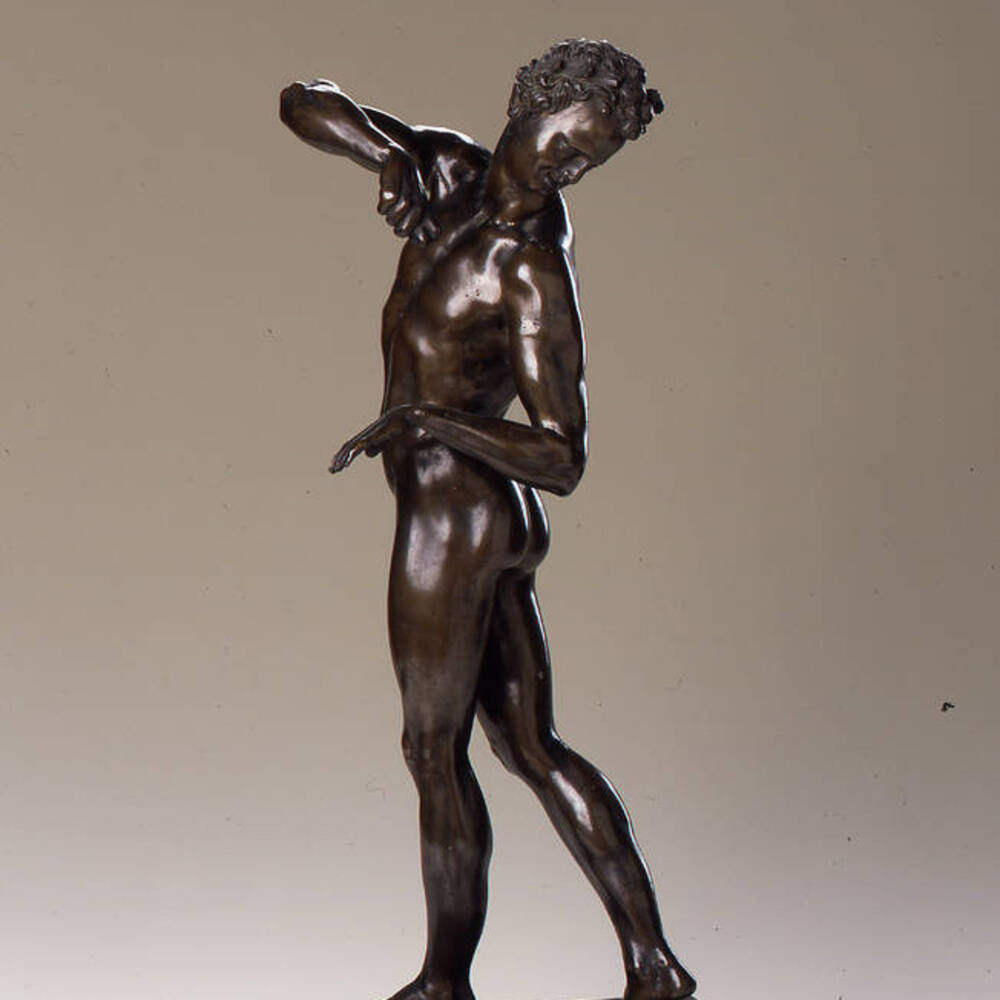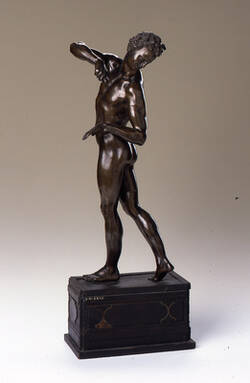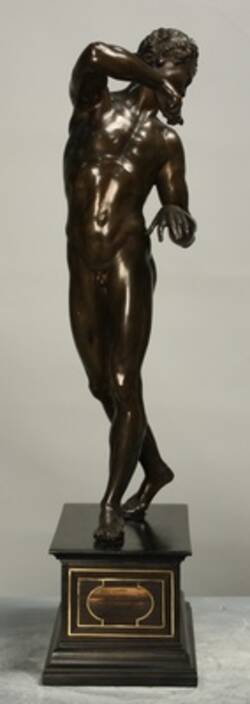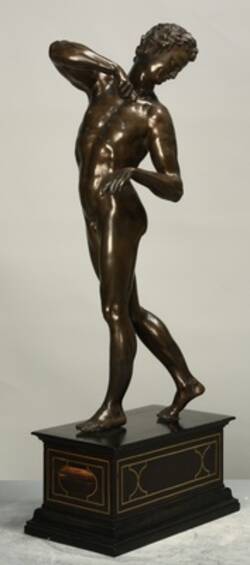De Vries was Giambologna's most brilliant student and a gifted bronze sculptor. In keeping with the mannerist "figura serpentinata" (serpentine moving figure), the slender-limbed faun turns gracefully on its own axis. Originally he was looking at a statuette of a nymph (delivered in 1924), to whom the insinuating gesture of his right hand was directed. The model may have been the antique torso of a satyr on the right, which was still in Italy in the 16th century.
Further Media
A faun – or perhaps Faunus, as the Italic peoples, the ancestors of the ancient Romans, called the god of nature and the forests. Faunus was equivalent to the Greek god Pan. The goddess Fauna was regarded either as Faunus’s wife, sister or daughter. Faunus was a fertility god, and his main task was to ensure the fields, animals and people flourished and were fertile.
In the stories in Roman mythology, fauns increasingly appeared as mythical creatures – half human, half animal, with horns, hooves and a tail, rather like the Greek satyrs. But fauns continued to be associated with fertility. Always sexually active, they liked nothing more than chasing nymphs – a subject taken up by innumerable painters, sculptures, poets and musicians, only further consolidating the reputation of fauns as salacious forest deities.
- Location & Dating
- before 1588
- Material & Technique
- Bronze
- Dimenions
- H: 48,5 cm, B: 13,0 cm, T: 19,5 cm
- Museum
- Skulpturensammlung
- Inventory number
- ZV 3205



